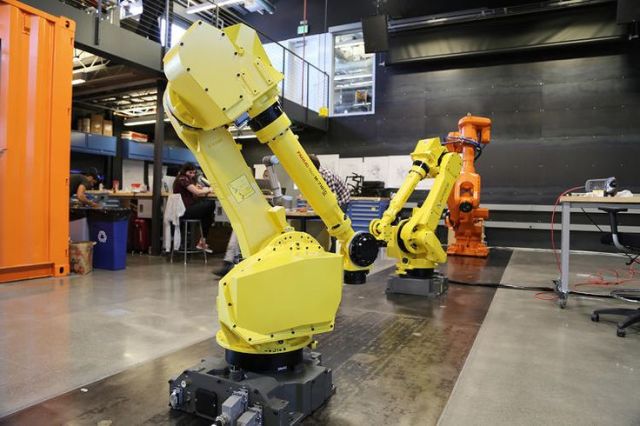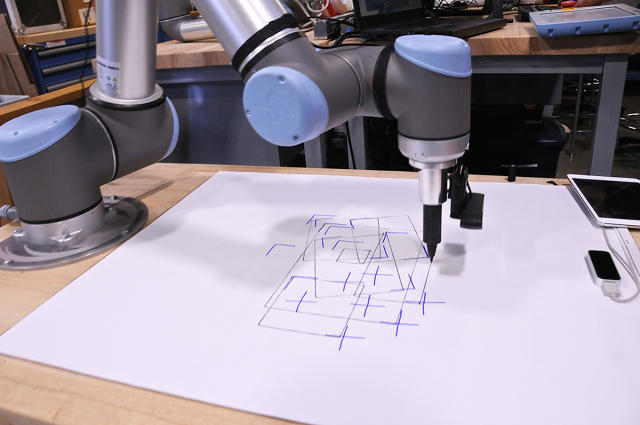A recent piece by FastCompany details the new direction that software giant Autodesk is moving at their Applied Research Lab at Pier 9 in San Francisco.
Autodesk, known primarily for its CAD, CAM and CAE software (Maya, AutoCAD, 3ds Max and Fusion 360), has had their Applied Research Lab tasked with moving beyond their comfort zone into robotics.
Robotics has long been an attendant technology within manufacturing and with other leading tech firms like Google investing heavily in it, Autodesk probably realized it had a major blind spot by not having a serious robotics strategy.
After discovering that much of Autodesk’s software is already being heavily used with robotics, particularly within the film industry, the Applied Research Lab determined that it was well positioned to begin changing the roles and abilities that robots have within manufacturing and other industries.
As they began to explore robotics, the team at the Applied Research Lab recognized that a binary standard exists: humans are the problem solvers and robots are best-suited for strength and repetitive actions.
To break this presupposition, they decided to have the robots watch people and learn their tasks, styles of work and other nuances. To have the robots learn from people meant applying computer vision, sensing technologies and realizing that this was fundamentally a software problem rather than a hardware problem.
As Autodesk sees it, the future of robotics will only be made brighter by producing smarter software to make smarter robots who can learn visually from humans.
Read more at ENGINEERING.com



